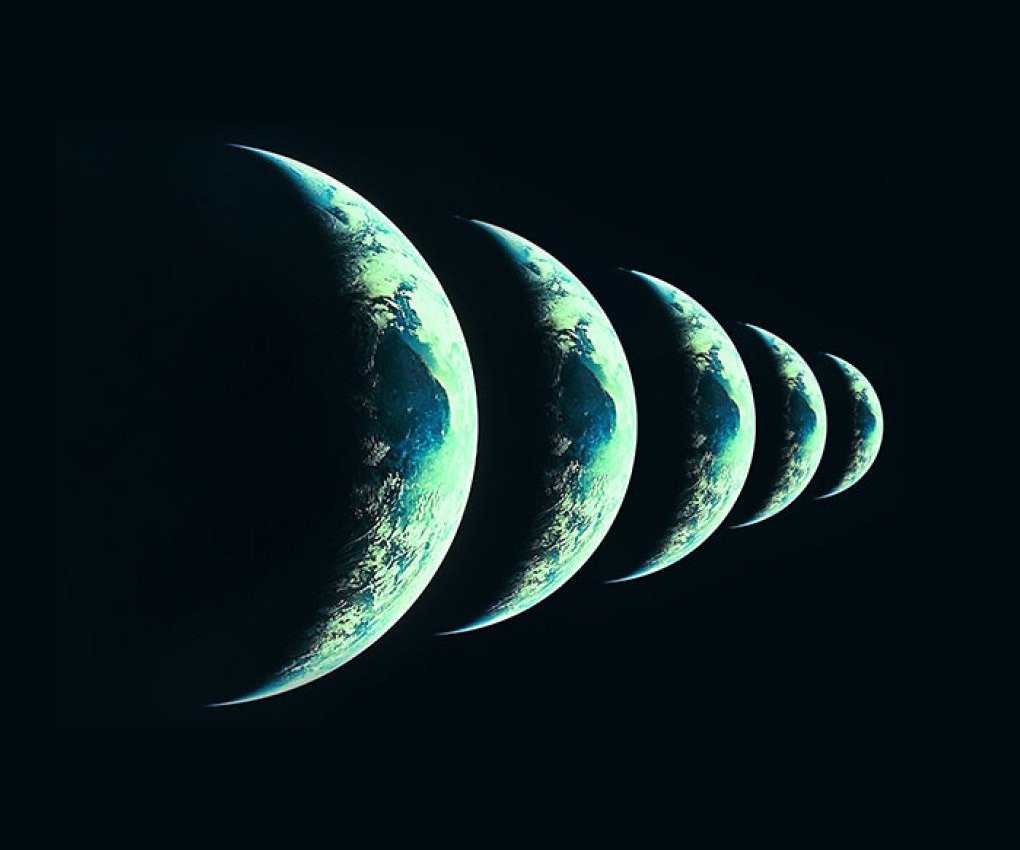
Article Overview 🔎
The Parallel Universe/Multiverse Theory Explained 🪞
The history of the multiverse (multiple universes) concept has roots in ancient philosophy and gained traction in modern science through quantum mechanics and cosmology, with key figures like Hugh Everett, Erwin Schrödinger, and Andre Linde contributing to its development.
The theory of parallel universes suggests that our universe is potentially one of infinitely many and that the space and time we can observe is not the only reality. Findings such as the universe being finite have led to this concept. String theory (which proposes that fundamental particles are tiny vibrating strings) is also linked to the multiverse concept.
Scientists suggest that our universe might be just one of many, with different physical laws and constants, arising from various configurations of extra dimensions. Beyond the observable universe, other universes may exist. Multiverses are predicted by several scientific theories that describe different possible scenarios, from regions of space in different planes than our universe, to separate bubble universes that are constantly springing into existence.
The ‘Inflationary Cosmology Theory’ gains a lot of scientific credibility. It is the idea that as The Big Bang happened, the universe rapidly expanded exponentially. “This theory at first looked like a piece of science fiction, although a very imaginative one,” says Linde, one of the architects of cosmic inflationary theory. “But it explained so many interesting features of our world that people started taking it seriously.”
Inflationary Cosmology predicts that inflation could happen over and over again infinitely, creating a constellation of bubble universes. Those universes would not have all the same properties as our own. Physics may behave differently. Some of them might be very similar to our universe, but they all exist beyond the realm we can directly observe.
Another compelling theory is the ‘Many-Worlds Interpretation’ (MWI) of quantum mechanics. It is the theory that mathematically describes how matter behaves and was proposed by Physicist Hugh Everett in 1957. It predicts the branching timelines of alternate realities in which our decisions play out differently, producing a wide range of different outcomes, some not so different, others very different.
“Hugh Everett says that there’s an infinite number of parallel Earths. When you do an experiment, all that proves is that you live on the Earth where that was the outcome of that experiment. However, on other Earths, there’s a different outcome.” says physicist James Kakalios of the University of Minnesota.
In the ‘Many-Worlds Interpretation’, versions of you could be living the many different possible lives you could have led if you’d made different decisions. However, the only reality that’s perceptible to you is the one you inhabit.
Black Holes and the Multiverse 🌀
Some theories propose that black holes could act as gateways to other universes or that universes could be born inside of them (leading to a multiverse scenario where our universe is just one of many). This is explained in more details below.
Black Hole Cosmology:
One idea, known as black hole cosmology, suggests that our observable universe might be the interior of a black hole within a larger, parent universe or multiverse.
‘Baby Universes’:
Some theories suggest that black holes could contain ‘baby universes’ or that our universe could be nested inside a black hole, which is itself part of a larger universe.
Wormholes and Alternate Realities:
The idea that black holes could be doorways into alternate realities is explored through the concept of wormholes, which are hypothetical tunnels through spacetime.
Einstein-Rosen Bridge:
Some theories propose that instead of collapsing into a singularity, the matter within a black hole might create a wormhole, also known as an Einstein-Rosen Bridge, connecting to another universe.
Evidence and Testing:
Some researchers suggest that if our universe was born inside a rotating black hole, it might inherit the parent object’s rotation, which could be tested through future experiments.
Dark Matter Connection:
Some studies suggest that tiny black holes from the early universe could contain ‘baby universes’ and potentially explain the existence of dark matter.
Primordial Black Holes:
The American Physical Society suggests that primordial black holes (PBHs) produced by the nucleation of false vacuum bubbles during inflation could account for all dark matter, explain a candidate event in the Subaru Hyper Suprime-Cam (HSC) data, and contain both heavy black holes and very heavy seeds of supermassive black holes.
HSC Observations:
The Hyper Suprime-Cam (HSC) has a unique capability to image the entire Andromeda galaxy every few minutes. When a black hole passes through the line of sight to one of the stars, the black hole’s gravity bends the light rays and makes the star appear brighter than before for a short period of time.
Stephen Hawking’s Perspective:
Stephen Hawking’s quantum perspective on the cosmos also touched upon the multiverse paradox, suggesting that black holes might be sending information to other universes or even back into our universe in different forms.
Check out our Multiverse Clothing Range:
-

Multiversal Simulation T-Shirt – Short-Sleeve Unisex Tee (White Text)
$19.99 Select options This product has multiple variants. The options may be chosen on the product page -

Multiversal Simulation T-Shirt – Short-Sleeve Unisex Tee (Black Text)
$19.99 Select options This product has multiple variants. The options may be chosen on the product page -

Multiversal Simulation Hat – Cuffed Beanie Unisex (White Text)
$19.99 Select options This product has multiple variants. The options may be chosen on the product page -

Multiversal Simulation Hat – Cuffed Beanie Unisex (Black Text)
$19.99 Select options This product has multiple variants. The options may be chosen on the product page -

Multiversal Simulation Trucker Cap – Unisex (White Text)
$19.99 Select options This product has multiple variants. The options may be chosen on the product page -

Multiversal Simulation Trucker Cap – Unisex (Black Text)
$19.99 Select options This product has multiple variants. The options may be chosen on the product page -

Multiversal Simulation Snapback Cap – Unisex (White Text)
$29.99 Select options This product has multiple variants. The options may be chosen on the product page -

Mutliversal Simulation Snapback Cap – Unisex (Black Text)
$29.99 Select options This product has multiple variants. The options may be chosen on the product page
The Emergent Multiverse Quantum Theory According to the Everett Interpretation 🌌
The Emergent Multiverse Quantum Theory, based on the Everett Interpretation (also known as the Many-Worlds Interpretation or MWI), proposes that quantum mechanics describes a constantly branching reality where all possible outcomes of quantum measurements are realized in separate, non-communicating branches of the universe.
Key Ideas of the Emergent Multiverse Theory (Based on Everett’s Interpretation)
Wavefunction Reality:
The wavefunction is a real, physical entity that describes the entire universe.
It never collapses (unlike in the Copenhagen interpretation). Instead, it continuously evolves according to the Schrödinger equation.
Branching Universes:
Whenever a quantum measurement occurs, the universe “branches” into multiple copies, each corresponding to a different possible outcome.
All outcomes exist, but in different decoherent branches that cannot interact with each other.
Observers as Part of the Quantum System:
Since measurement is just a physical interaction, the observer also becomes entangled with the quantum system.
This leads to the experience of a definite outcome in each branch, while other versions of the observer exist in other branches.
Emergent Classicality:
The classical world we experience arises emergently from the quantum reality due to decoherence (the process by which quantum states stop interfering and behave classically).
No Need for Wavefunction Collapse:
In contrast to other interpretations, MWI eliminates the need for the mysterious “wavefunction collapse.”
Instead, every possible event continues to exist in separate, non-communicating realities.
The “Emergent” Multiverse:
The many worlds are not fundamental but emerge from the unitary evolution of the universal wavefunction.
This differs from naïve multiverse theories where different universes exist independently; instead, the branching structure emerges naturally from quantum mechanics.
Philosophical and Scientific Implications
Determinism:
The theory is fully deterministic—randomness is an illusion because all outcomes happen.
No “Special” Observers:
There is no need for an external observer to “collapse” the wavefunction.
Testability:
MWI makes the same experimental predictions as standard quantum mechanics, making it hard to distinguish experimentally.
Probability Issue:
Critics argue that if all outcomes occur, it’s unclear how to make sense of quantum probabilities (this is called the “Born rule problem”).
The Emergent Multiverse perspective, developed by theorists like Dr. David Wallace, refines Everett’s idea by emphasizing that the branching structure itself is an emergent feature of unitary quantum mechanics. You can read Dr. David Wallace’s book ‘The Emergent Multiverse Quantum Theory According to the Everett Interpretation‘ here and view his lecture on it in the YouTube video below:
Multiverse/Parallel Universe Physicist Videos 🎥
Below are some informative videos from the likes of World Science Festival and Sean Carroll (a physicist that specializes in quantum mechanics, gravitation, cosmology, statistical mechanics, and foundations of physics).
You can read more on the multiverse here and the parallel universe here.
















